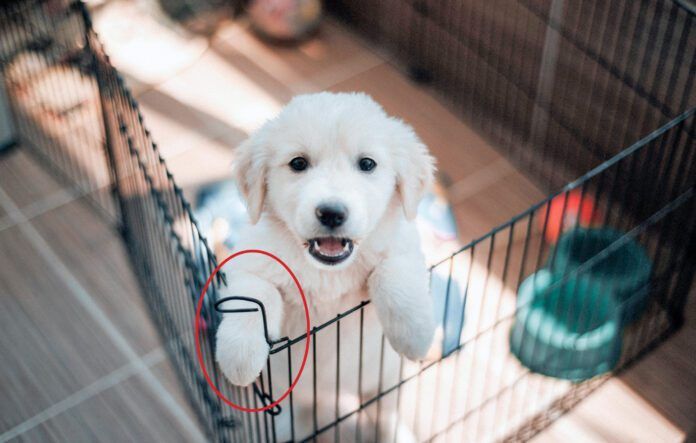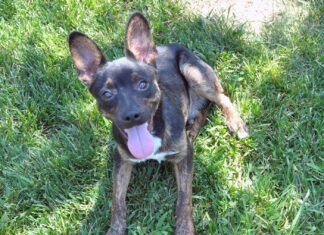I have a sign hanging near my back door that says, “If I can’t bring my dog I’m not going.” Of course, it is meant to be humorous, but it is truer than I care to admit. I am lucky in that, as a trainer, I have been able to bring my dogs almost everywhere I go. Not everyone is as fortunate. Let’s see if I can help you make plans for your puppy, should you be forced to leave him home alone.
First, sorry, but do not leave your young puppy in a crate for a long time. Your youngster needs food, water, attention, potty breaks, and exercise. A puppy should not be left alone for more than a few hours, like no more than four hours, and even then, you need to have a secure and SAFE setup. If you’re at work all day, you need an alternative to leaving your puppy home alone.
Now, we can discuss what that safe and secure setup may entail.
Are You Ready to Leave a Puppy Alone?
Before bringing your puppy home, you should be all set up for his arrival with food, toys, a crate, and maybe an ex-pen or a safe room for the crate. If you are lucky, your breeder has already done some crate training with the puppy. Crating is a good way to keep your pup safe when you are not home. If not, you need to do some crate training.
Choosing a Crate for Leaving a Puppy Alone
I’ve used both solid plastic and wire crates. I have a 5-month-old Golden Retriever and used wire because that’s what I had. I was also home most of the time to supervise. I think, for most puppies, solid walls like you see on a sturdy plastic crate are safer and cozier for a puppy.
I like to set the crate inside an ex-pen. This allows the pup to sleep in a clean crate, and potty, drink, eat, and play in the larger area. I recommend placing a tarp on the floor, then puppy pee pads on top. Yes, these pads may get ripped up, so make sure your pup isn’t chewing up and swallowing the pieces. If he is, you need an alternative.
An alternative is to have a pan the pup can go potty in. My breeders used alfalfa pellets or shavings in the pan, which kind of created a litterbox. Check with your breeder and use the same material to provide a similar environment if you can. If you have a small room, like a laundry room, the same set up could be created as with the ex-pen but be sure nothing is on the floor or anywhere in the puppy’s reach. Look around your pup’s environment at all the things he could get in to when you are not home.
If you put a warm blanket in the crate, will your pup chew on it and swallow fabric? Then he doesn’t get a blanket.
If it’s a wire crate, could he get a foot caught in the wire? I used duct tape to close a gap when my pup slipped a tiny paw through a wire doorway.
Make sure your crate/ex-pen set up is not near an electrical cord, outlet, or anything else on the outside he may reach for. With puppies, if there’s a temptation, they will go for it.
Leaving a Puppy in an Ex-Pen
My Golden puppy took about a week to figure out she could climb up the sides of her ex-pen. Fortunately, I had an ex-pen top to snap on to prevent escapes. Remember, what appears to be safe during week 1 may not be as safe in week 6.
I purchased several inexpensive little cameras and placed them around the house. It enables me to use my phone to check the home front making sure the canines are OK. There are all kinds of things that can be operated remotely. You can even drop a treat into a crate when you are not home!
So, now that you have your pup safe and comfortable, it’s time to run an errand or go to work. Start for short periods of time so your pup gets used to you leaving and knows you’ll be back. Start by just working around in the backyard for an hour or so at first.
If you can, tire your pup out and he will be more likely to sleep while you are gone. Remember, if your puppy has a big drink after playtime, he is going to want to relieve himself shortly thereafter so you might want to get one more trip outside before departing.
If you do have to leave for several hours, leave the crate door open so the pup can come out and satisfy some of those needs while in the ex-pen. Make sure your puppy has safe things to keep him busy when you are not home.
If you work all day, you need to come home at lunch to tend to your puppy. Or arrange for someone to stop by and do the same. Perhaps a neighbor or a reputable dog walker could visit. When I let my friend’s dogs out at lunch time, I leave them with a treat that she had prepared earlier and froze. Inside the treat—a safe one like a Kong—are yummy things like canned dog food, pumpkin, peanut butter, yogurt, moistened kibble, etc. By the time the puppy has finished, they are relaxed and full and ready for a nap. And before you know it, mom and dad are home!
Puppy Doggie Day Care
An alternative to having visitors stop by is to enroll your dog in a doggie day care. They can attend half or whole days, and most have a puppy room for the youngest of guests. Even two or three days a week can make a difference for an active puppy. Do your research, talk with other dog owners and trainers (and your veterinarian) and find dog day care that meets your needs.
Keeping your puppy engaged and active when you are home will help. Be sure to use your time wisely when you are home. Enroll in an evening puppy training class or sign up for an online class and do it. You can fit in puppy training at night. Lots of age-appropriate exercises and enrichment games are a must for a puppy to grow into a happy, healthy dog. Alone time is not a dog’s favorite, but they learn to adjust and accept it if you put all the pieces in place.






